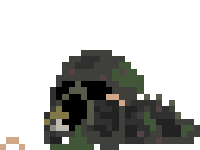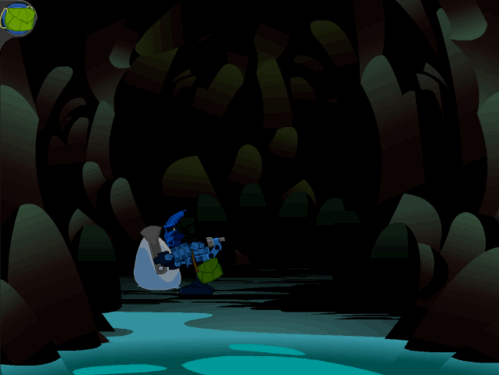
|
2023.04.08 prote of dermisHere's some stuff about protodermis i've had kicking around in my head for months now. i want to do a bit of a history of how it was presented, and also share my funny protodermis theory. So kick back, fill a mug with some fresh, nice, mercurial liquid, check your proto meter is full, dont worry that anything will attack you, dont pay attention to any avenues by which something might attack you, and enjoy. what's in a name‘Protodermis’ is a second-draft name. The original name, ‘biodermis’, didn’t pass LEGO’s legal check. This is unfortunate, as biodermis is a lot more self-explanatory than its replacement. |
|
Like Bionicle, biodermis is a portmanteau. The first constituent word is the same in both – ‘biological’. The ‘biological’ of ‘biological chronicle’ alludes to the true nature of the story; that it is the conflict of the cells of a gigantic body. I believe ‘biological’ serves the same purpose in biodermis, signaling that this biodermis material is from the giant. ‘dermis’ focuses in on what kind of material it is. Epidermis – i.e. 'skin.' This might seem odd given that protodermis ultimately came to be shorthand for the material the *entire* robot was made of, not just its shell. Bear in mind though that proto began as a resource mined from underneath the island – chipped off of the robot’s face, as it were. The ‘proto’ of protodermis still gets at this general concept, more abstractly. 'Proto' harkens to the early, the ancient, the forgotten, the prototype – the sorts of things that the giant robot was intended to represent. "the stuff of life"Whenua uses these words to describe protodermis in MNOG – evocative! and not elaborated on. Fans were left to wonder just what this mysterious ore could be. We’ve since learned from Templar Games’ extensive development notes that a smithy in the city would have accepted the protodermis you collected, fashioning it into various creatures you could use in your adventure. Protodermis was the ‘stuff of life’ in a surprisingly literal sense – the material of which the living things of the island consisted, and could be fashioned. 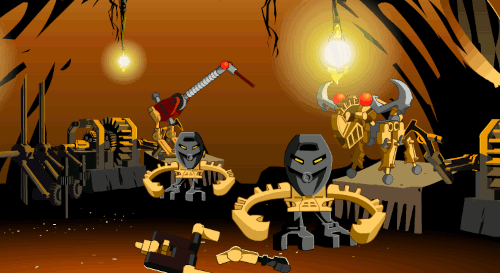 incomplete biodermis smithy This is actully pretty consistent with what is presented with regards to protodermis from 2004 onward. Perhaps the most unusual aspect of what Templar hoped to include in their game was the Matoran as the masters of this substance. Matoran use it to build and maintain creatures. Potentially themselves, too - remember in 2003 the Matoran learn to totally reconstruct themselves. This was revised in later years, with Matoran becoming somewhat helpless in dealing with their own matter. They are sent to Karzahni for repairs, and rely on the Brotherhood to create the world’s animals. The earlier concept we see in MNOG aligns with the initial depiction of a close symbiotic relationship between Matoran and creatures – see N's writing on this for more detail. Now. There's a hapaka in this room and I have to look at it. *looks* oh ok its actually quite small. you see this is because despite being designed as an elephant, the hapaka model is tiny. 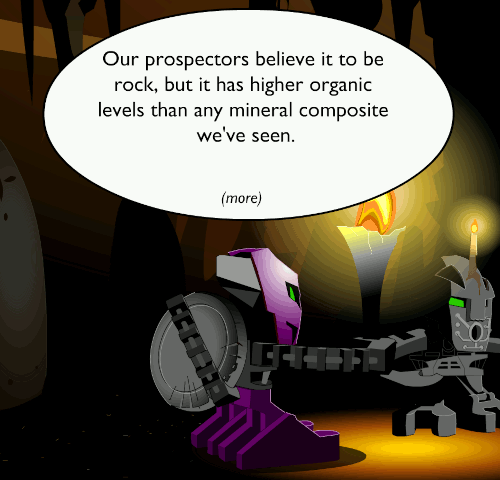 ok so the thing is MNOG *also* has a very literal run in with the ‘skin’ of the giant – and it is not treated as protodermis. Finding the robot’s actual hull, the miners liken it to the ‘organic’ nature of a bionicle crab shell. A crab would be made of protodermis, right?? But instead they regard the substance as stone. Draw your own conclusions, but I’m fine with attributing this to Templar developing the subplot themselves, and not interpreting whatever info they had on protodermis overly literally. i'll admit though that this could be seen as a gaping hole in the argument i am trying to make. the seal of successIn 2002 the protodermis narrative swerved into a totally new direction. When confronting the Bahrag, the Toa inadvertently activate some ancient system of the hidden giant. They are plunged into vats of silvery, mercury-like material. The material swirls around them, transforming them into the much more powerful Toa Nuva. And that strange material’s name? Protodermis. In 2001, protodermis was basically just loose bionicle pieces. And this is carried through in the story 2004 onward (more or less!!!!). What’s with this detour? 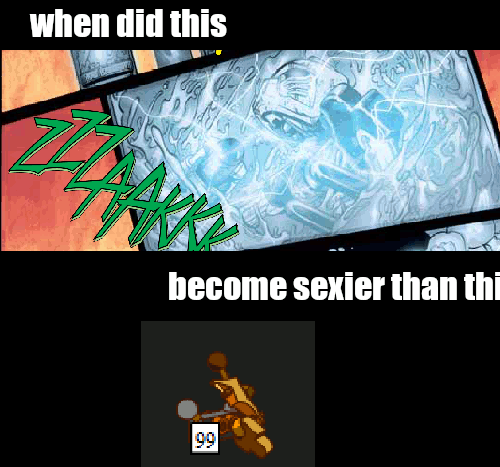 It’s worth noting that the Bionicle story team was really more or less debuting protodermis in this way, in 2002. Everything we discussed above from 2001 wasn’t really known to fans yet. All we knew from the version of MNOG that shipped is that protodermis was mined, and it was the ‘stuff of life’. For what purpose would the islanders mine this volatile liquid? For better or worse, we are now left with two protodermises. One is the giant’s skin, the material bionicle life is made of. The other is a strange liquid substance that the bionicle team seemed to regard with enormous importance. Incidentally, I think this split is rather well-embodied in this art from the exo-toa instructions: 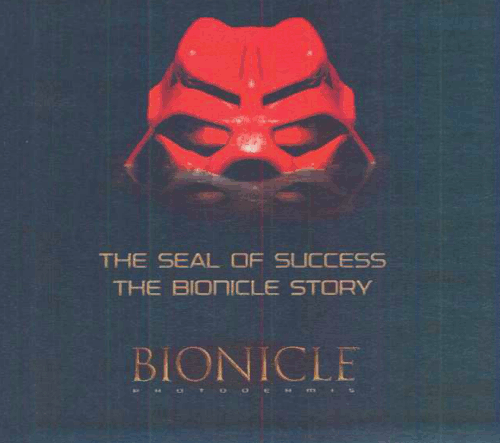 The Seal of Success – When the Toa defeat the Bohrok, their success is marked by this seal. It adorns their bodies as they become Nuva, and it embalms the Bohrok nest, which is washed out in the silvery liquid. This is the New Protodermis. The Bionicle Story – Protodermis is a reflection of the big secret, the truth of the giant, which makes up the core of the story. This is the Old Protodermis. bohrok nuvayou've made it to the coolest part of this blogpost: emily's rahkshi theory. What can be used for good can also be used for evil. In this image we see that even as the Nuva are born, the protodermis births something else… something... sinister........  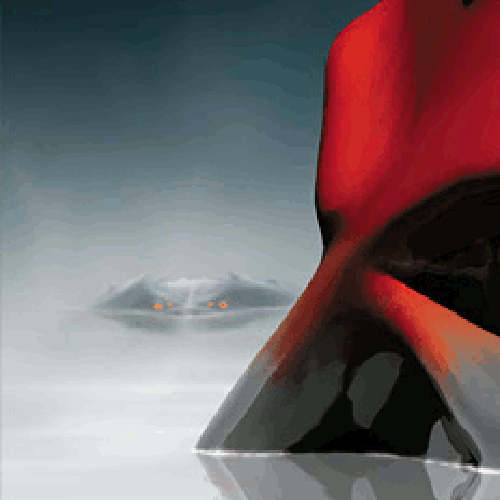 According to both Leah Weston Kaae and Greg (im sure he said it but i dont know where dont yell at me), these evil guys in the protodermis are kraata – the slugs that would control the Rahkshi armor a year later in the summer 2003 story. But that raises some questions – we see in the Mask of Light movie that the kraata are part of Makuta’s essence, created when he literally rips them from his body. Why are they here in the Bohrok nest, taking a bath? Things began to make sense to me when storyboards of the Rahkshi birth sequence from the movie came to light on ebay. In the boards, rather than reaching into himself and clawing gross slimy slugs out, makuta reaches into a protodermis pool and draws out snakelike tendrils. They wrap around his arms as they harden into the kraata.  This at least establishes the connection with protodermis. But I believe I have identified an even earlier conceptual stage, which the Nuva rising pic reflects not just metaphorically, but literally. When the Toa first enter the chamber in which they will later transform into the Nuva, they place all the krana they have collected into niches in the floor.  Then, once they transform, the floor of the chamber is flooded with protodermis. 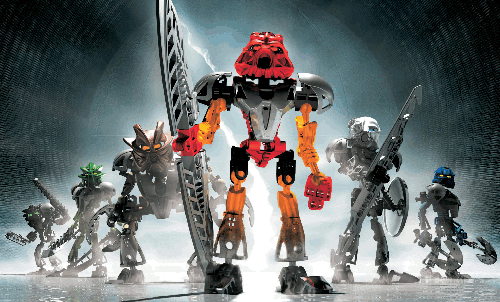 ...If protodermis makes a Toa a Nuva, what does it make a krana….?  Kraata were referred to as krana during the development of Mask of Light. The artist of the above kraata concept, Leon Gor, confirms this in the comments of his post. These series of drawings were done at a very early stage of production, so the names used may not match with the official storyline. Also, the uniqueness of some of the names made spelling a bit tricky at times. You can probably see what i'm getting at: kraata were in fact evolved krana, and the rahkshi were a new incarnation of the bohrok, perhaps designed by Makuta to allow him direct control. and if its true that the kraata were conceived of as 'krana nuva,' you can probably imagine what went wrong... the bohrok kal once again ruin everything allow us to introduce ourselves The Bionicle team had planned for the immediate follow-up to the Toa Nuva arc to be the Mask of Light movie and the Rahkshi. But, nearly too late, some marketing man noticed that this would leave a gap of new product for a half-year. That’s money left on the table for Lego’s most valuable cash cow! The "solution" was the Bohrok-Kal, a set of literal ‘Bohrok Nuva.’ It was a quick and easy concept that stalled for time – but, tragically, one that seems to have robbed the Rahkshi and their kraata of the gravitas that had been intended for them. Now that the Kal existed, they couldn’t exactly do Bohrok Nuva, part 2. Especially after the Kal were a massive commercial failure. Still, the protodermis connection was one of the last of the Nuva elements to be dropped from the Rahkshi. We saw how it carried through, in a modified form, into the storyboards for the movie. And the Bionicle team was careful to deny the involvement of protodermis in the creation of the krana-kal - see the backstory insert in comic 10. Ultimately their troubles were for naught. But this did not mean the end of protodermis for Mask of Light…… the will of mata nuiI’ve come to think that Takutanuva is maybe BIONICLE’s most literarily dense moment. In general, I wouldn’t really characterize BIONICLE as a dense story, but the fusion of Takanuva and Makuta carries a surprising amount of subtextual weight. I and N have both talked about the figure in terms of the relationship between the Matoran and Makuta. Here I want to look from a slightly different vantage point. Takutanuva, who by their own proclamation speaks for the giant robot Mata Nui, is created when Takanuva and Makuta fall into a pool of protodermis. In this moment, the liquid – the giant’s essence, its material – acts for it. You could certainly argue the Nuva transformation was the giant’s will as well. The protodermis allows the slumbering giant to be an actor in the story’s events. 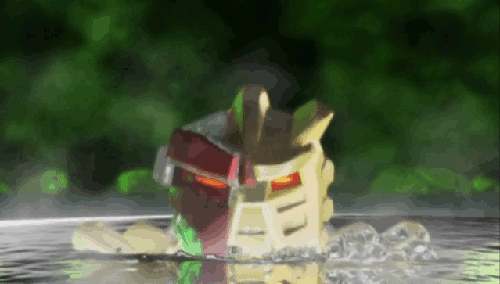 When Takutanuva opens the gate to Metru Nui, the first view we are given of this hidden world is a vast, silver sea. This copious abundance of protodermis, in comparison to its scarcity and value in the years prior, telegraphs the change to come. We are now at the source! Protodermis shifts away from being just the skin of the giant – it is everything around the characters. city of silver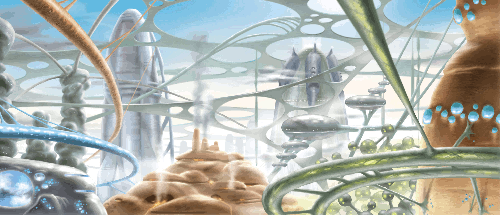 society if everything was made of toxic mercury Metru Nui is a city inside the giant’s brain. The giant is made of protodermis. So everything in the city is protodermis too! The city's purpose could ultimately be described as 'protodermis moving', in the same way our own bodies are ultimately just the constant process of chemicals moving to different places and different configurations. The raw liquid of the silver sea is let in to Ga-Metru, where it is filtered and purified. Here also, Matoran learn and study the protodermis cycles, an abstraction for the giant’s own learning processes. From Ga-Metru, protodermis flows to Ta-Metru, where it is heated up to a molten state, and forged into any object or tool (for continued brain/city maintenance). The solid protodermis making up the island itself is mined and carved into great monuments in Po-Metru; the giant’s creativity. In Ko-Metru protodermis basins grow crystal towers of the robot’s new knowledge and thoughts. Transport veins, flowing with protodermis rather than blood, are maintained from Le-Metru. And when some protodermis object has fulfilled its purpose, it is committed to the Onu-Metru archives, the giant’s labyrinthine memory. This harkens back to the early ideas of Matoran being protodermis artisans – now, though, it is exclusively with inanimate material. This new approach to depicting protodermis even fully integrates the alternate, silvery liquid version from the Nuva. Now it is the raw material the rest of protodermis is fashioned from. Unfortunately, this still doesn’t account for the transformative properties that had previously been associated with the liquid. The solution was to formally cordon off the transforming protodermis as its own special subset of the substance – ‘energized protodermis.’ The 2004 guidebook simply says that this variant is a mystery, and that it looks just like the raw, but non-transformative, ocean protodermis. The oroboros eats its tail – even in a world that is all protodermis, there is still a *weird* protodermis that is not understood and is only found deep in the underground-underground mines. I have to wonder why this special transforming stuff really needed to be protodermis at all. But that’s the decision they committed to. the man in the mercury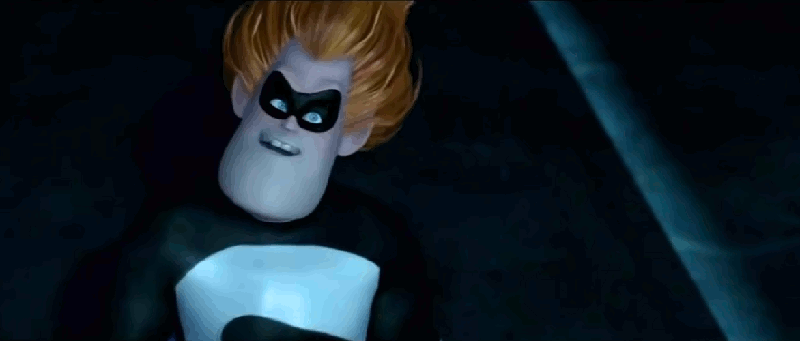 and when everything's protodermis.... Protodermis becomes so ubiquitous after 2004, that it actually generally fades into the background. Energized protodermis, the transformy stuff, becomes the new ~point of mystery~. The Maze of Shadows novel is a watershed moment. It was published in 2005 - a year when Greg Farshtey was exercising increasing creative control over bigger story elements. While individuals like Bob Thompson and Christian Faber had long-term ideas for bionicle, Greg preferred writing as he went, and letting the story reveal itself to him through his own writing. Bob departed from Lego in 2005, taking his ideas with him. In Maze of Shadows, Greg conceived a new twist, en lieu of lore continuing to drip from on high. Now, energized protodermis would not just transform things, but destroy in equal measure – each touch a 50/50 gamble. What’s more, this ‘destiny’ of life or death was the whim of the energized protodermis itself – which was a sentient thing, spread across any existing energized protodermis in the universe. It could even shape itself into different forms, not relegated to being an inanimate liquid. It also hated everyone. I think this whole concept is fun and good, but there’s no larger -reason- for it, beyond Greg also thinking it would be fun. It has no bearing on the nature of the giant robot, or how its internal systems work. If anything, it actually causes multiple problems in that regard - that was just not Greg's concern when he had this idea. Likewise, there is never any context or followup on it - the idea largely lives and dies in this one book, as tremendous as its implications would seem to be. in-core-herenceI've tried a few times to write about what happens to protodermis in the story after this, but i dont have anything new or insightful to say on it. suffice to say if you read bs01 you'll learn everything there is to know. Its a flat note to end on, but- *turahk suddenly strikes you with its staff of fear, sending you into a panic* lmaooooo yes thats right this entire post was a ploy to distract you while i sent my six sons, the dreaded rahkshi, to ambush you. nice going idiot *too paralyzed with fear to move, you can do nothing as vorahk steps in and begins draining your energies. guurahk and panrahk explode things threateningly in the background* lol get fucked *as you begin to lose conciousness, the last thing you see is the rahkshi coordinating to play air guitar on their staffs together like in the rahkshi rock video. you have to admire their skill* lehrak: aaaaand scene. nice job guys, that one was perfect. sprites back at my place? *everyone laughs* the end? |
|
